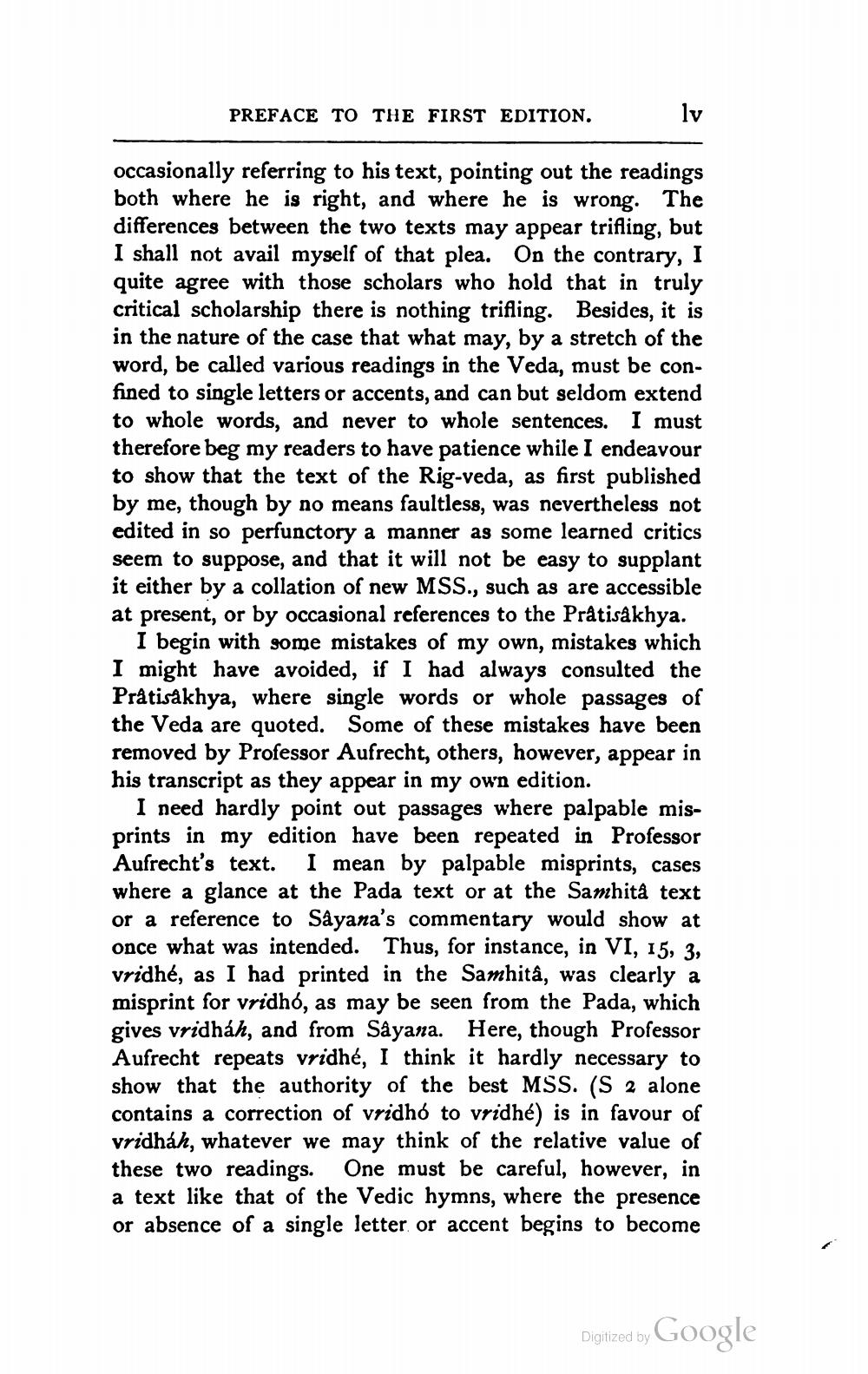________________
PREFACE TO THE FIRST EDITION.
lv
occasionally referring to his text, pointing out the readings both where he is right, and where he is wrong. The differences between the two texts may appear trifling, but I shall not avail myself of that plea. On the contrary, I quite agree with those scholars who hold that in truly critical scholarship there is nothing trifling. Besides, it is in the nature of the case that what may, by a stretch of the word, be called various readings in the Veda, must be confined to single letters or accents, and can but seldom extend to whole words, and never to whole sentences. I must therefore beg my readers to have patience while I endeavour to show that the text of the Rig-veda, as first published by me, though by no means faultless, was nevertheless not edited in so perfunctory a manner as some learned critics seem to suppose, and that it will not be easy to supplant it either by a collation of new MSS., such as are accessible at present, or by occasional references to the Prátisakhya.
I begin with some mistakes of my own, mistakes which I might have avoided, if I had always consulted the Pratisåkhya, where single words or whole passages of the Veda are quoted. Some of these mistakes have been removed by Professor Aufrecht, others, however, appear in his transcript as they appear in my own edition.
I need hardly point out passages where palpable misprints in my edition have been repeated in Professor Aufrecht's text. I mean by palpable misprints, cases where a glance at the Pada text or at the Samhità text or a reference to Sayana's commentary would show at once what was intended. Thus, for instance, in VI, 15, 3, vridhé, as I had printed in the Samhita, was clearly a misprint for vridho, as may be seen from the Pada, which gives vridháh, and from Såyana. Here, though Professor Aufrecht repeats vridhé, I think it hardly necessary to show that the authority of the best MSS. (S 2 alone contains a correction of vridhó to vridhé) is in favour of vridháh, whatever we may think of the relative value of these two readings. One must be careful, however, in a text like that of the Vedic hymns, where the presence or absence of a single letter or accent begins to become
Digized by Google




